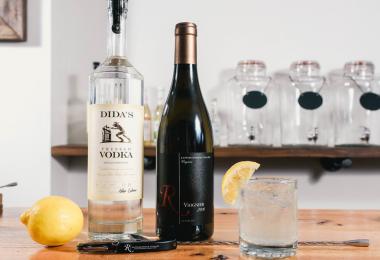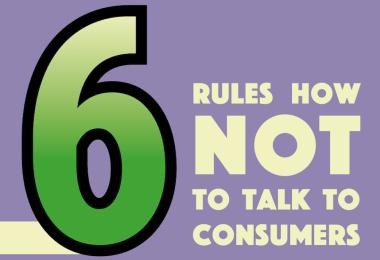A single Instagram picture may not be worth 1,000 words, but it could have greater marketing impact than a 140-character Tweet. Earlier this year, Instagram revealed that it had 200,000 active advertisers on its platform, almost twice as many as rival Twitter. With a community of over 400m users, the online photo- and video-sharing social networking application has become one of the world’s largest mobile ad platforms, and the wine industry is taking notice.
Take New York-based Wine & Co, an agency that promotes wine trade associations. It has helped, for example, the Austrian Wine Marketing Board to promote Austrian wine in the US, encouraging wine consumers to go beyond Grüner Veltliner by using photos on Instagram to communicate other Austrian regions and grapes. “We focus on landscapes and use situational photos to bring the idea of regions and grapes to our followers,” explained company founder Constance Chamberlain. “Social media tells simple stories to attract consumers to wine – and Instagram pictures help create the buzz needed to gain such attention,” she added. Imports of Austrian wine have grown over the past six years in the US, surpassing the importance of other export countries and increasing in value. “We have to make sure that our Instagram posts are compelling, that they showcase scenes that someone would want to be a part of, imagery that evokes an emotional response,” Chamberlain said.
Impact, beauty, frequency
JK Marketing received the International Wine Challenge (IWC) Campaign of the Year award last year for its promotion of Brazilian wines in the UK market. Their campaign helped increase visibility for Brazilian wines in the UK, according to IWC, partly because of the company’s “hands on” approach to social media – including the use of Instagram. “Instagram is really made for people who like nice, beautiful things; it seems stupid to say that, but it’s all about the quality of your pictures and about how you are able to express them,” said business partner Ana Sofia de Oliveira.
De Oliveira – who has posted nearly 1,500 photos to double that number of followers – says Instagram is essential for any successful campaign, and that a story has to be told effectively, with the right kind of photos. Three categories of pictures work well on Instagram, she said:
(1) attractive scenery pictures, in unusual and/or distant or exotic locations;
(2) people in engaging settings, particularly if they themselves have many followers, because their followers will see the image. An example would be a photo of a member of the 20,000+ strong international online community #winelovers; and
(3) photos that showcase the wine brand, such as bottle shots, the winery itself or dinner settings with the wine.
Instagram – which sells ads through parent company Facebook via its self-serve tools Ads Manager, Power Editor and Marketing API – can also help shape a brand’s online identity. For VitaBella, a wine promotion agency, Instagram has helped define the visual identity of client La Vieille Ferme, a Luberon wine made by Famille Perrin, proprietors of the famous Châteauneuf-du-Pape estate, Château de Beaucastel in the Rhône Valley. With two years on Instagram, VitaBella founder Guillaume Jourdan says that the evolution of the application has permitted the company to have a more image-focused alternative to Facebook, which thus augments the visual identity of the brand. Of course, he said, postings on Instagram are also relayed to Facebook – it is best to coordinate with both social media platforms – but the La Vieille Ferme website includes a panoply of attractive Instagram pictures. “This focus on aesthetics pushes us to fine-tune a style in our publications that create a veritable identity,” Jourdan explained.
With nearly 1,000 followers of the La Vieille Ferme Instagram account, the focus is on organic growth, rather than sponsored growth, Jourdan added. “That way we reach people who are truly engaged with the brand.”
But compelling images alone do not suffice. Antiqua Tours in Rome and Taste Georgia promote tourism and wine in Italy and Georgia. The owner of both companies, Sarah May Grunwald, estimates that 30% of her business comes from social media, including Instagram. But a company can lose out very quickly if posting is not regular and frequent enough. “I notice that when I slack off on social media, that I start getting less inquiries,” Grunwald said. “It is important to update Instagram at least once a day.”
Non-English speakers say that images remove the need to post in English, but they also say that using English hashtag terms is essential, since many buyers are English speakers. Take for example Châteauneuf-du-Pape, whose marketing arm the Fédération des syndicats des producteurs de Châteauneuf-du-Pape uses Instagram increasingly to promote the region. “It really helps us to reach out to the younger generation, which is an important marketing target,” said group spokeswoman Marie-Clémentine Savey. “They are tomorrow’s buyers.” But equally important, she explained, is the need to translate into English, especially because Americans buy a lot of Châteauneuf-du-Pape.
Why hashtags matter
Hashtags channel images to target audiences, even if they are not a very exact method. “As with Twitter, hashtags matter, because we understand the context, where the visual identity appears,” explained VitaBella’s Jourdan. “Hashtags also facilitate searches for posts that concern us,” he added.
Hashtags on photo uploads furthermore connect Instagram users who share common business interests. Swiss ecommerce company Wiine.Me sells wine selected by sommeliers and other experts via subscription, and proposes tasting events. Company representative Kat Morse said that a common hashtag helped her to find the right sommelier for a tasting event in Munich. The first person that came to her mind was a sommelier whom she had only met once a few years ago, but they had shared more recent contact on Instagram: “So we ended up working together on the event, and I have re-contacted many others in this manner, and it has been good for both parties,” Morse said.
Future growth
A recent convert to Instagram sponsored ads is Bordeaux-based wine negociant Millésima, which opened its Instagram account in January 2015. “At first we were lurking, rather than using the tool, because it did not seem to offer any palpable communication advantages, as compared to Facebook and Twitter,” explained Millésima representative Frédéric Lot. But then the company took notice of Instagram’s exponential growth, overcoming competitor Twitter in terms of advertisers worldwide.
For Lot, the platform does not have as much insight as does Twitter (and Facebook), or much ability to track users, but “likes”, image views and engagements indicate where a campaign works best. When the company invested €420.00 ($472.00) on two recent Instagram campaigns to reach a potential worldwide audience of about 200,000 people for Lafite Rothschild, for example, it reached nearly 260,000 views – but with variable results. Well over half of those views came from Germany, Italy and Spain alone, but Lot reported “the worst” results in Luxembourg, Ireland and Hong Kong. The point of the ad investment was not to obtain direct sales of Lafite Rothschild, but to encourage people to follow the brand and to share with the growing Instagram community, thus increasing Millésima’s name recognition – and gaining an idea of where more work is needed to obtain such recognition.
Room for improvement
For all its promise, Instagram needs to be improved, users say. Hashtags for example are not specific enough for marketing. “It would be useful if we could better target our potential audience by being able to select people to follow according to their specific preferences and other subscriptions,” VitaBella’s Jourdan said.
For Wine & Co’s Chamberlain, the search function is inadequate: “From a marketing perspective it is unfortunate that you can only search hashtags and not captions, so for example, if someone mentions ‘Austrian wine’ we can only search that if they use #AustrianWine,” she explained.
Furthermore, Instagram’s launch this past March of a new algorithm, which chooses which posts users see in their feed, and in what order, may harm brands that rely on free Instagram posting to reach their customers. “So now those who chose to follow us might not even see our posts, if they’re not deemed relevant enough to our audience by the Instagram algorithm,” said Chamberlain.
Other users, like Nila Halun of Bibenda Assisi, a wine bar in Assisi, Italy, said that while Facebook allows users to block a contact that “we consider not interesting” it is not possible to do so on Instagram.
Whatever the case may be, Instagram, when combined with other social media, is becoming more important for the wine industry. Companies like Millésima are increasing their time with the platform. “Our goal is to make sure we post photos and videos at the right times, as well as with regular frequency, to generate loyal engagement and even get viral photos,” Millésima’s Lot said. The Instagram community at Millésima counts just under 800, he said, but the goal is to triple that number by January 2017.
Panos Kakaviatos








